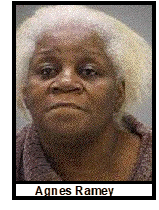
This site is copyrighted, supported, and maintained by the Equal Justice Foundation.
| EJF Home | Join the EJF | Comments? | Get EJF newsletter | Newsletters |
| DV Home | Abstract | Contents | Tables | Index | Bibliography |
| Chapter 13 — Women Who Have Killed Their Partners In Colorado |
| Next — Early Tales Of Lethal Domestic Violence By Females In Colorado |
These stories are commonly taken from reports printed in the Denver Post and the Colorado Springs Gazette though other sources have been used as noted.
We make no claim that all female murders of intimate partners are listed although we add them as we find them. The Crime and Justice in Colorado 2008-2010 report states (p.12) that just 81% of the known homicide perpetrators were men implying upwards of 29% were women. That suggests females commit 40-50 homicides each year in Colorado, of which only a small fraction are tabulated in these pages.
For reasons enumerated by Dr. Warren Farrell in his Twelve female-only defenses we estimate that at best one in ten of the men and women murdered in Colorado by their female intimate partners are included here for the years from 1998 on.
In the following accounts if there is no reference to a newspaper account then we did not find any such report. That may simply be our failing but it is likely many such killings of men by family members goes unreported.
Infanticides and neonaticides, almost exclusively female crimes against children, are not included, with one exception.
While there is no single underlying thread or factor in women killing their intimate partners, a large insurance policy on the man, with the woman as the beneficiary, is a risk to him. Also, jealousy and emotional disturbance are often factors. Drug and alcohol abuse are always dangerous, in or out of a relationship.
| EJF Home | Join the EJF | Comments? | Get EJF newsletter | Newsletters |
| DV Home | Abstract | Contents | Tables | Index | Bibliography |
| Chapter 13 — Women Who Have Killed Their Partners In Colorado |
| Next — Early Tales Of Lethal Domestic Violence By Females In Colorado |
This site is supported and maintained by the Equal Justice Foundation .